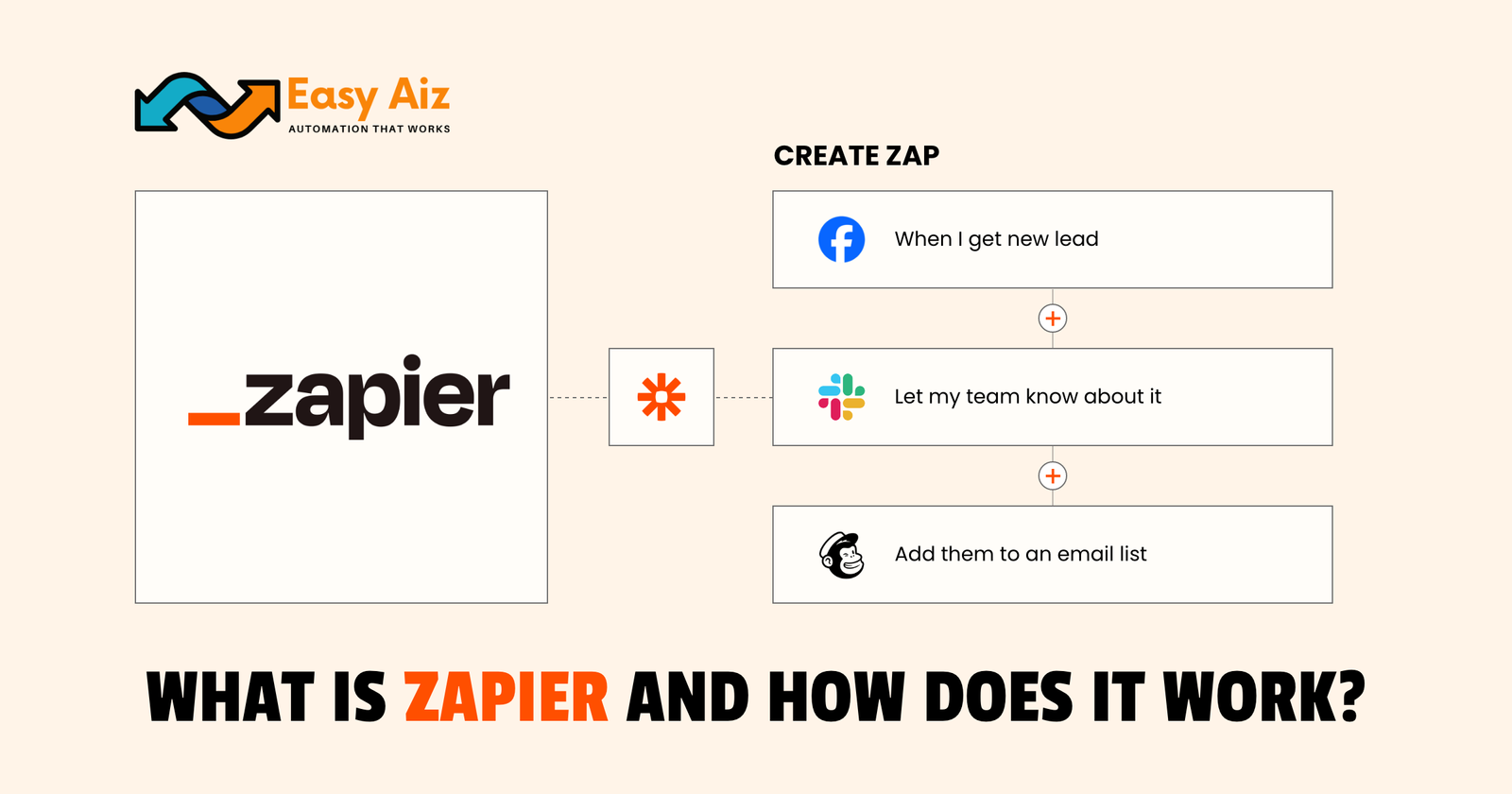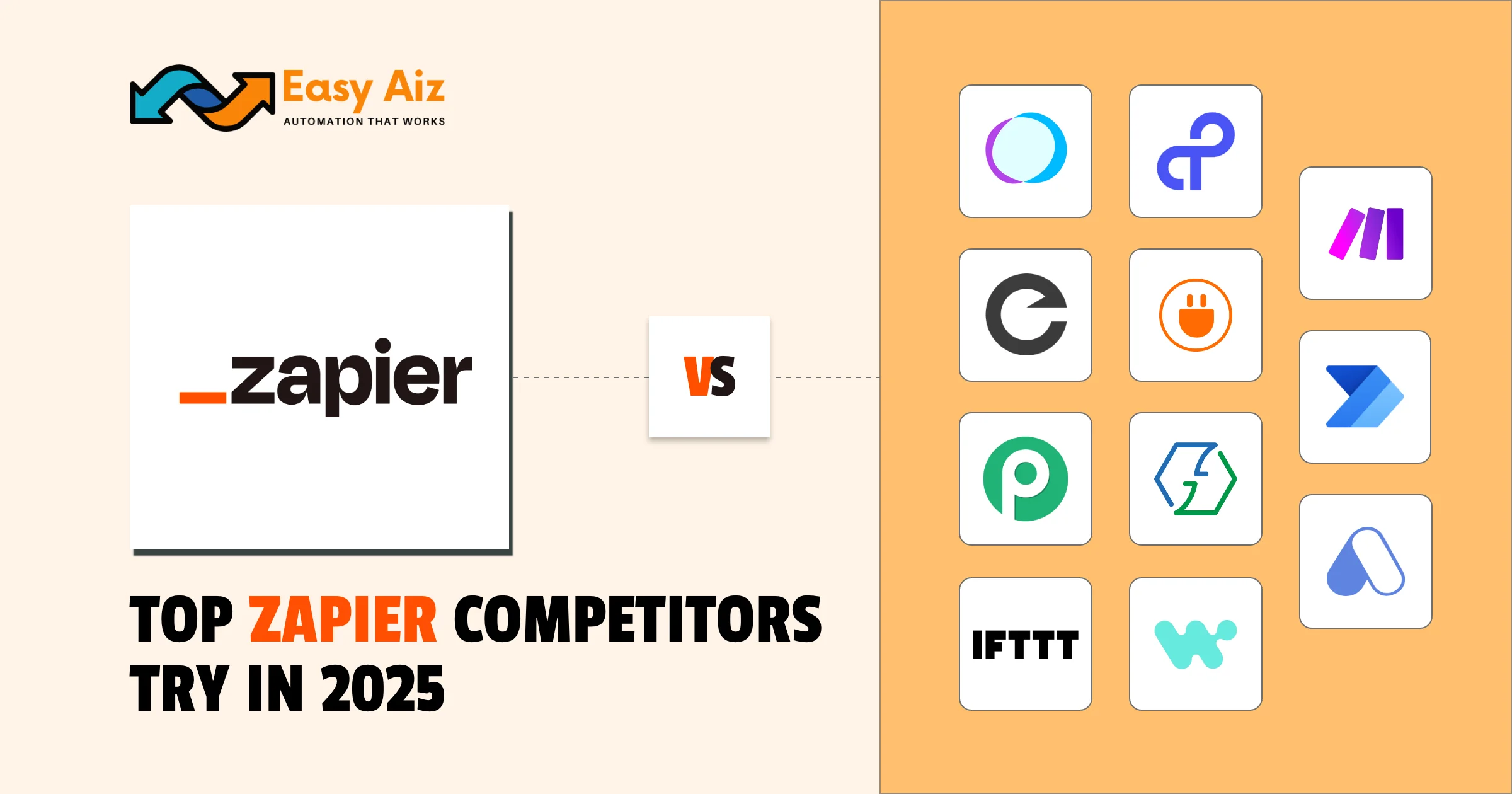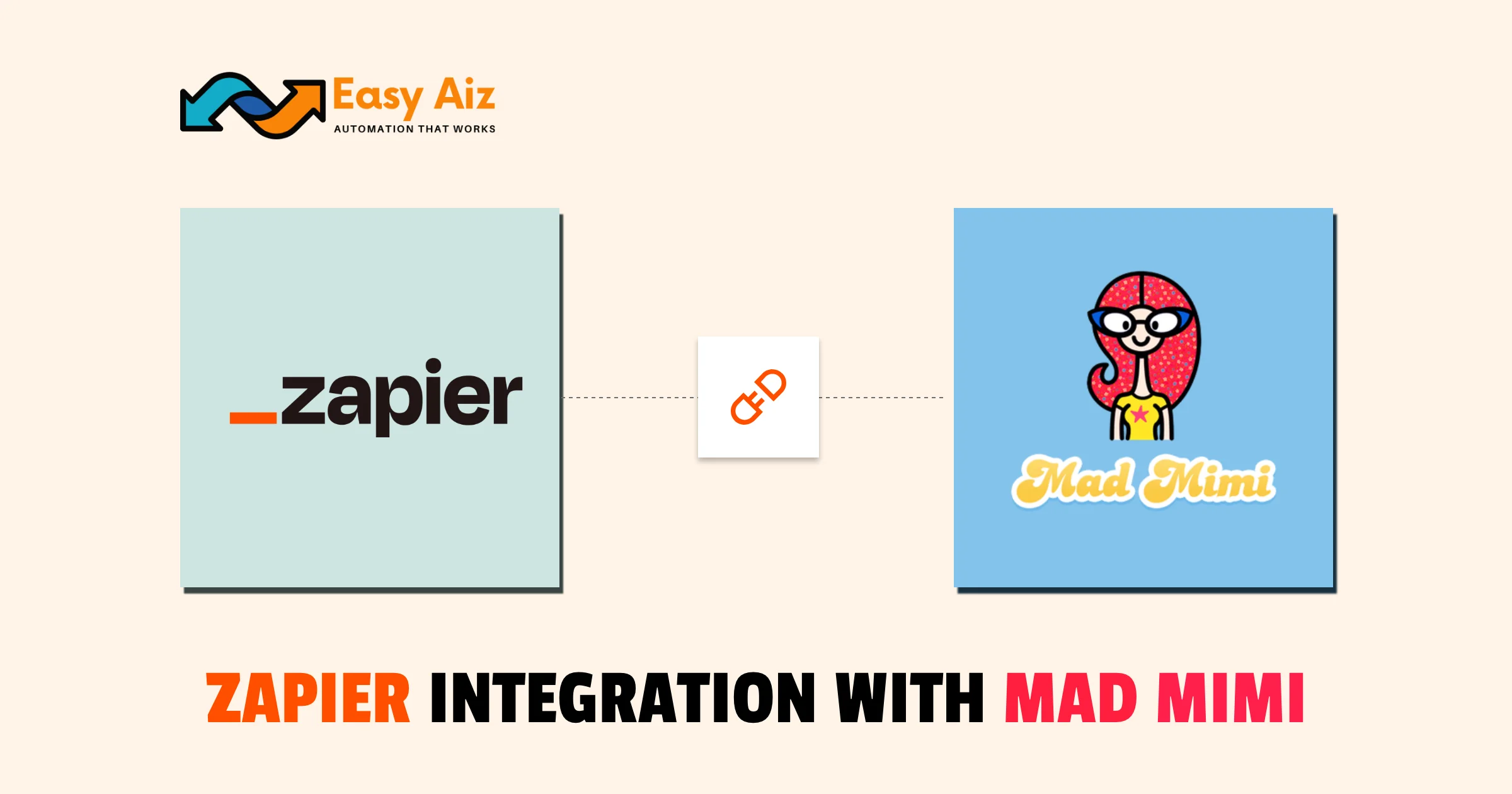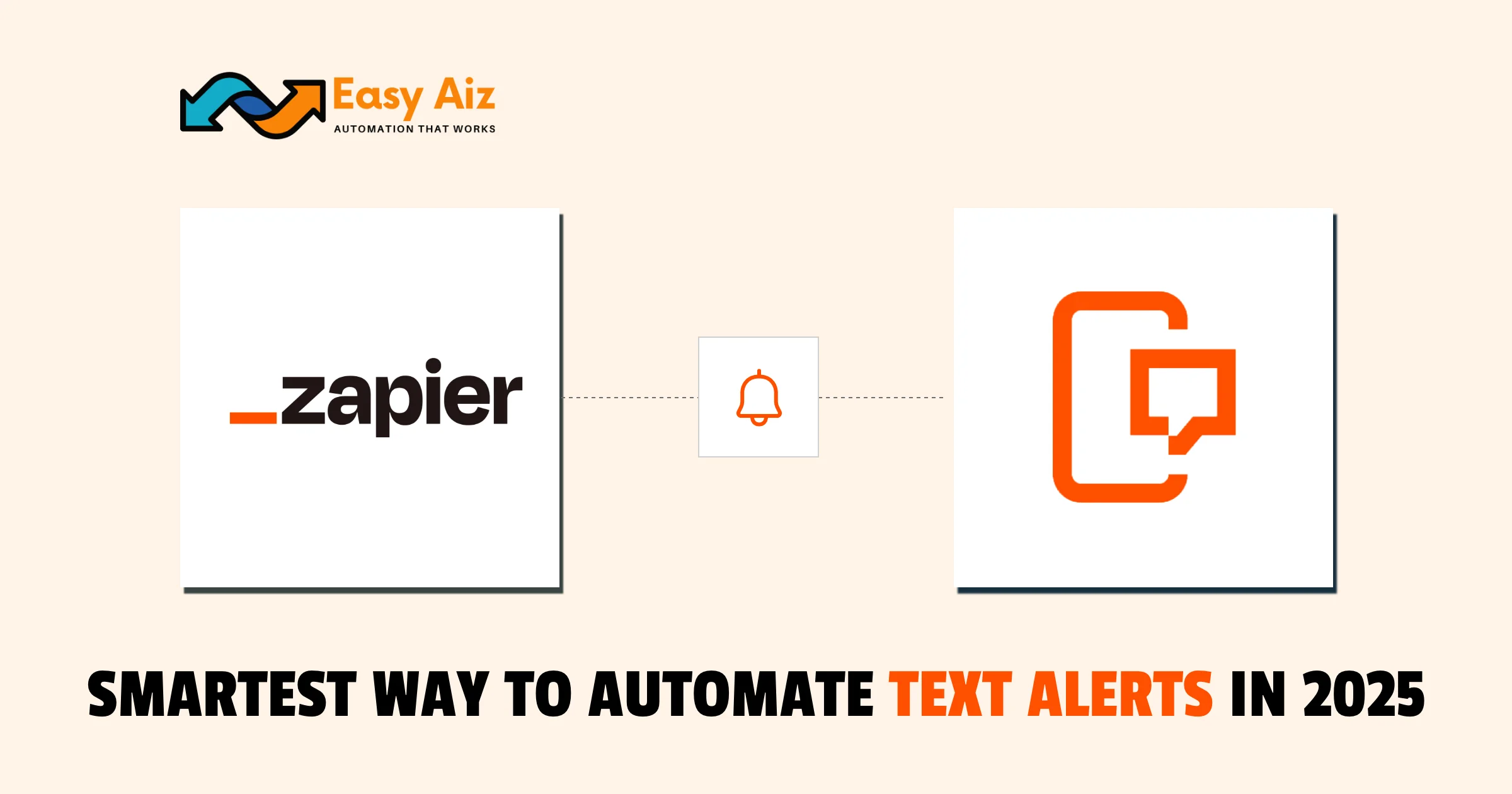
Table of Contents
Automation has literally transformed the way we use to work in the past. It has not only accelerated productivity but also allowed for enhanced creativity. Zapier has evolved to be the pivotal tool in the automation world which is helping individuals and industries to reap the utmost output from the least amount of input.
Although the immense fame has made the name familiar to the world, unfortunately, still many people exist unknown to the full potential and basics of Zapier. If you belong to the same group of people, keep on reading. In the forthcoming content we will be elaborating on what is Zapier and how it works while discussing all the other essential information.
Let’s begin.
What is Zapier?
Zapier is an automation tool which was launched back in 2011 in Columbia by Wade Foster, Bryan Helmig and Mike Knoop. It is often known as “Glue” of the apps which connects hundreds and thousands of applications together to streamline workflows. You can leverage the platform to automate tasks which are repetitive and time-consuming through Zaps. Users can start the workflows with a trigger and end it with an action.
The tool has made a significant mark in the social media world where it is used to streamline the content creation process. You can use it with a buffer or social media management tools to schedule tasks like posting of blog posts on wordpress etc.
Key concepts and terminologies in Zapier
To acquire an in-depth understanding and reap the full potential of Zapier, you need to know some of its key terms and shun jargons. Some of these include:
1. Action
An action basically is a form of event performed by Zap after you trigger it. For instance, you can instruct the software via Zap to send a text message every time you receive a new email and it will do the task for you everytime in the future.
2. Alpha
3. App
4. Test Record
5. Multi-step Zap
6. Filter
7. Paths
8. Polling Interval
9. Built-in Tools
10. Zap Editor
11. Zap Outline
12. Zap History
13. Zap Runs
14. Premium App
Some apps in Zapier are premium and require a paid plan.You can try them during a free trial.
Afterward, a subscription is needed for continued use.
15. Alpha and Beta
Alpha and beta features are new and in testing stages. Alpha is private testing, beta may be open to more users. They offer early access but might change quickly.
16. Autoreplay
If enabled, Autoreplay retries failed steps caused by temporary issues. It tries multiple times until the error clears. This increases reliability for Zaps with important tasks.
2. ActiveCampaign
ActiveCampaign is another powerful email-marketing tool which is specially built for advanced automation and customer journey mapping. It’s best for teams needing CRM and deep segmentation.
How does Zapier work?
Setting up a Zap:
- Select the applications you want to work with.
- Add a trigger. This way, the action will be initiated.
- Add an action.
- Customize and map the fields.
- Test if Zap is functioning properly.
- Publish the Zap.
Automating the lead conversions:
- Send leads to the target customers using Zaps.
- Keep track of the sales opportunities through software.
- Make sure leads are headed through the email further,
- Use automation to send leads to your email marketing platform from CRM.
- Send automatic notifications to your team whenever and wherever.
Automating the client communication:
- Set up Zaps to send automatic reminders and follow-ups.
- Send friendly reminders to your clients to notify them about any upcoming event.
- Send prompt messages before and after the meeting to showcase your interest.
Automating Client Retention:
- Zapier helps you send automated replies to the client just after they send their query.
- Streamline the workflow by tailoring and scheduling responses.
- Schedule automated check-in according to your work requirements to enhance productivity.
Top Applications for Zapier Integration
1. Google Sheets
If you rely on spreadsheets, this one’s a must. Zapier can automatically send form entries or updates right to your sheets. Thus, no more copy-pasting or missed data. It’s a simple way to keep everything organized and always up to date.
2. Slack
Working with a team? Slack keeps everyone in the loop. You can use Zapier to send instant messages when something important happens. Think of new leads, tasks, or form responses. It saves you time and keeps communication flowing without effort.
3. Mailchimp
Need to grow your email list or follow up fast? Zapier makes sure every new lead gets into Mailchimp automatically. You can also trigger campaigns based on specific actions. Overall we can say that it is email marketing without manual work.
4. Trello
Managing projects in Trello becomes easier with Zapier. You can auto-create cards when someone fills out a form or joins a list. It even helps move tasks when progress is made elsewhere. That means, less admin, more actual progress.
5. Google Drive
We all store files somewhere and Google drive is one of the most considered option for this. Zapier can save files from emails or form submissions without lifting a finger. You’ll never forget to upload again. It’s like having a digital assistant that always remembers.
6. Calendly
Scheduling meetings can feel like a juggling act. With Zapier, you can send follow-ups or reminders right after someone books. It also helps update your calendar or team instantly. You’ll spend less time scheduling—and no one gets left out.
7. Facebook Lead Ads
Running ads? Don’t let those leads sit untouched. Zapier can grab new leads and push them into your CRM, spreadsheet, or email tool. It’s automatic and super fast. You’ll reach out to people while they’re still interested.
8. Airtable
Think of Airtable like spreadsheets—but way more powerful. Zapier helps you update records, log submissions, or trigger tasks. It plays nicely with lots of other tools, too. So your workflows stay clean, connected, and customizable.
9. ActiveCampaign
If you’re into smart email marketing, ActiveCampaign is a great pick. Zapier can add new contacts, update info, or launch automated campaigns. Everything stays in sync behind the scenes. Which means better outreach with zero hassle.
10. Zoom
How to Set Up Zapier (Step-by-Step)
Step 1: Sign up
Step 2: Click “Create Zap” on your dashboard
You’ll find this button at the top-left corner of your screen.
Step 3: Choose your trigger app
Step 4: Pick the specific trigger event
Step 5: Connect your trigger app account
Zapier will ask for permission to link your selected app.
Step 6: Test your trigger to pull sample data
Make sure Zapier finds real data to continue the setup.
Step 7: Choose your action app
This is where automation will do something (like Slack or Google Sheets).
Step 8: Select the action event
Step 9: Connect your action app account
Step 10: Map the fields correctly
Step 11: Test the entire Zap
Step 12: Activate the Zap
Final Thoughts
On the bottom line, Zapier is one of the most efficient tools available out there for automation. It helps to integrate over 8000 apps to enhance productivity. However, to properly use it, first understanding the basics is necessary.
The same is why we have assembled this guide which talks about all the essential things you must know about the platform. So, make sure to read from start till the end to reap maximum benefit.
Table of Contents
Get started with Easy Aiz
Have any project in mind? Book a free call now to automate your Project !!
More Blogs
Explore top 11 closest Zapier competitors- each offering a unique set of features and facilities.
How to Set Up Zapier Integration with Mad Mimi and Outgrow Zohaib Ali 10/07/2025 Table …
Explore some of the best email marketing softwares in 2025 along with their key features, pros, cons and pricing plans.
SMS by Zapier: The Smartest Way to Automate Your Text Alerts in 2025 Zohaib Ali …



